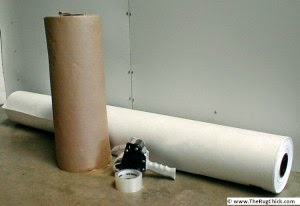 |
| Rug cleaning in Cambridge - Art of Clean |
Sweeping is usually the most effective
Wet Spills
Whatever you do, do it quickly. The longer a liquid remains on the rug, the more likely it is to seep into the pile and stain your beautiful rug.
Do not rub - blot with paper towels then dilute the remainder with cold water and continue blotting until the spill is no longer visible. If any traces remain, a small amount of a mild wool detergent may be used. Try to not increase the area of the spill.
Pet Urine
Pet urine can create severe problems. It can cause the colours to run and create a smell that is very hard to eradicate. Quite apart from making a rug more attractive to moths.
Persistent wetting can affect the foundation of a rug by weakening it to such an extent that the rug can actually crack or break.
Act quickly: Blot up as much liquid as possible with paper towels or a clean cloth. Try to rinse out as much of the spill as possible. Adding a cup of vinegar to a gallon of water can help to reduce the smell!
Spot Cleaning
Rinse the rug thoroughly without soaking it, then blot dry before using a non-shedding sponge or cloth to work rug shampoo (or a mixture of 1/4 cup of white vinegar, 1/2 teaspoon of liquid dish-washing detergent and 2 cups of tepid water) into the area.
The rinse again with clean water, blot dry and allow to dry thoroughly. Ensure both sides of the rug are completely dry before putting it back into service. Draping the wet rug over a couple of chairs, or similar, will allow the air to circulate all the way round and improve drying.
Remember: With rugs, always work in the direction of the nap.
Crushed Pile
Pile crushed by the legs of heavy furniture or similar can be teased out: brush the indented area with a soft brush, gently moisten the area (a plant spray is ideal) do some more gentle brushing.
Curled Corners or Edges
Curled edges or corners are often a result of the way a rug is woven - most can be eliminated, or at least minimised with careful laying out or in some cases bloked in shape when cleaned or in severe cases the rug will require a repair.
Art of Clean is a specialist cleaning firm in:
Working for domestic or commercial clients throughout Cambridgeshire, Essex, Suffolk and Hertfordshire.
For more information on our services contact our friendly team on 01223 863632 or email us at info@artofclean.co.uk




